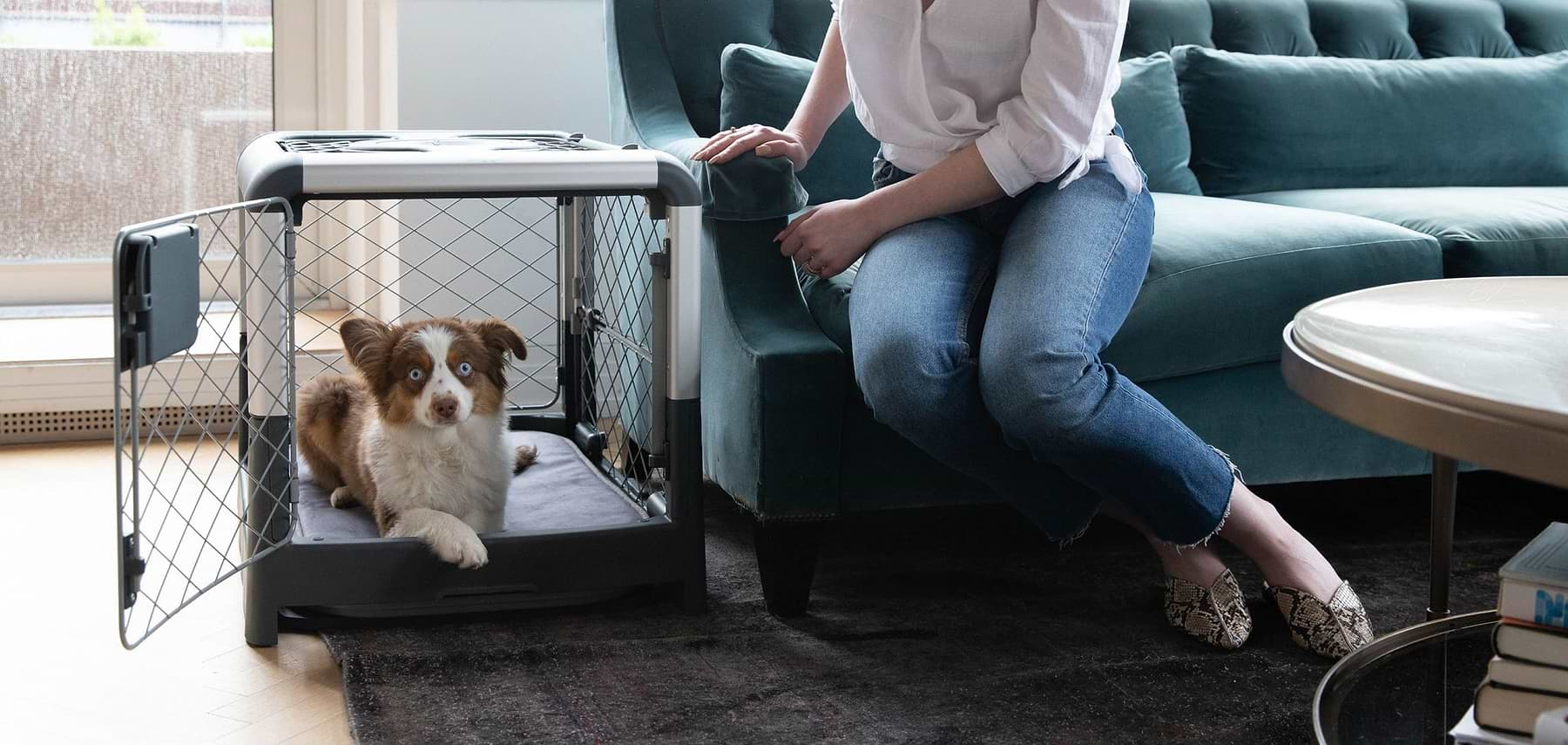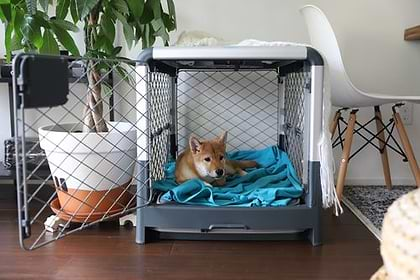When welcoming your new puppy home, you may be tempted to pamper them silly, buy them tons of toys, and think about training later on. We know that crate training can be daunting, so we've put together 5 tips to help you get started.
But, did you know that as soon as your puppy is old enough to come home with you that he’s old enough to start learning the joys of his dog crate? Not to mention, starting early on is far easier than trying to get your pup to unlearn ingrained and mischievous behaviors.
This list is not intended to be a comprehensive crate training process, but if you are looking for one, check out our Ultimate Crate Training Guide.
1. Identify a reputable training source
Use a crate training approach recommended by a vet, trainer, breeder or a trusted training book. Once you find a reliable resource, stick to the process outlined. Don’t “wing” it without professional guidance.
2. Short and Sweet Training Sessions
When you start training your puppy, the first thing to note is that you should keep training sessions short and sweet.
The absolute maximum time that you want to spend training your dog to accept his crate is fifteen minutes. As his doggie parent, it’s up to you to keep an eye on his body language and decide when it’s time to quit for the day.
Pacing, chewing at the crate, or even themselves, are common indicators that they’ve had enough; alongside the most common - whining, and barking.
3. Establish a Bedtime Routine and Stick To It
Have a Bedtime Routine
Try to establish a routine, with dinner time, potty time, and quiet time all taking place at the exact same time leading up to bed.
Last Minute Potty Break
As part of your routine, make sure you let your puppy out to relieve himself just before you go to bed. In the first weeks, you will probably need to let him out a few times through the night.
Stick with it
It’s absolutely normal for your puppy to whine or cry while in his crate. After all, you just had a super fun day together, and he doesn’t want the party to end just because it’s bedtime! But as his pet parent, you need to teach him how to get his beauty sleep, which means not letting him out if he stamps his little paw or cries.
I know this might mess with your beauty sleep, and it can be upsetting to hear your new fluff ball cry to be with you, but I promise it will soon be worth it to both of you! If you absolutely must let him out, wait for him to quiet down so he does not feel rewarded for crying.
4. Have No Expectations
Crate training can be a great time to bond with your new dog as he joins your family, and also helps ensure your role as alpha of the pack while setting up the ground rules for a happy home.
When crate training, try to focus on each training session and not on the results you expect or any deadlines you have set yourself.
That way, you can enjoy your journey to a crate-trained dog and, wouldn’t you know it, the more patient and relaxed you are during training, the better the results you’re likely to achieve!
5. Expect Setbacks
It’s perfectly normal for your puppy to have bad days, where the training is tough and it feels like you’re going backward. But don’t let this get you down. Just finish on a good note -- this can be as simple as asking your pup to do simple tricks and enjoying a few moments together -- and start fresh tomorrow!
Are you struggling with crate training? Check out our newest product Groov – it's a first-of-its-kind crate training aid.
Ready to get the best crate ever? See why The Pampered Pup rated Revol their #1 Best Overall dog crate.

The Diggs Team
We believe our dogs deserve safer, better designed pet products.
You might also like
Crate training tips, stories and inspiration
View all blogsIn Your Diggs
Share your photos with #DiggsPet and tag us @DiggsPet on IG and TikTok.



